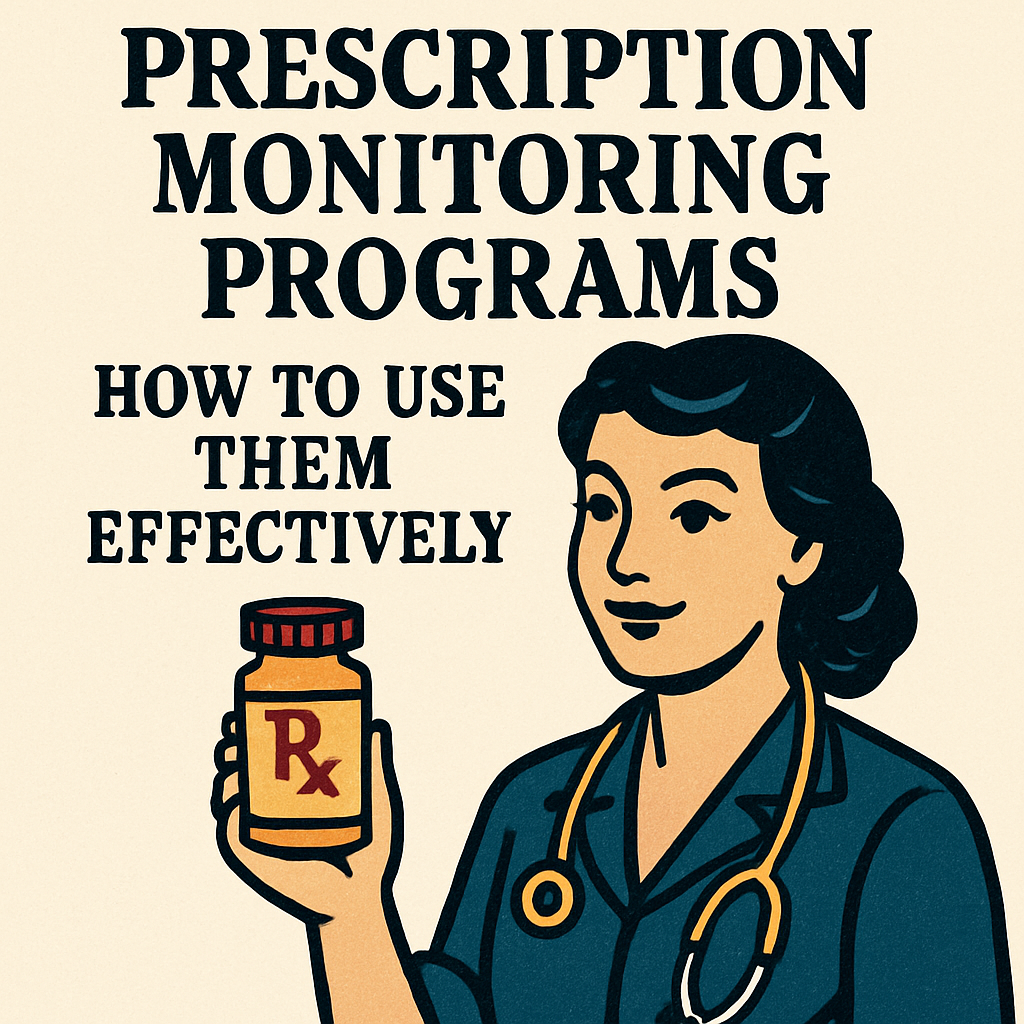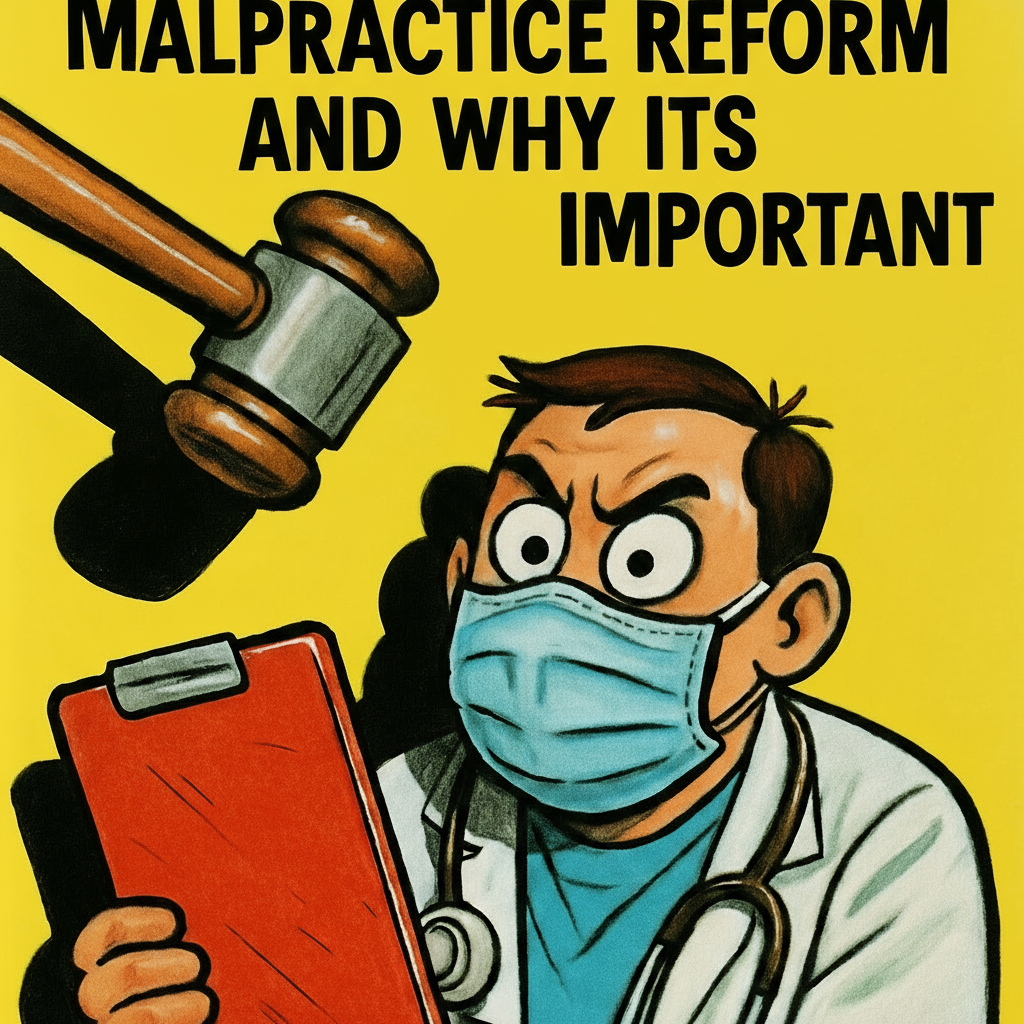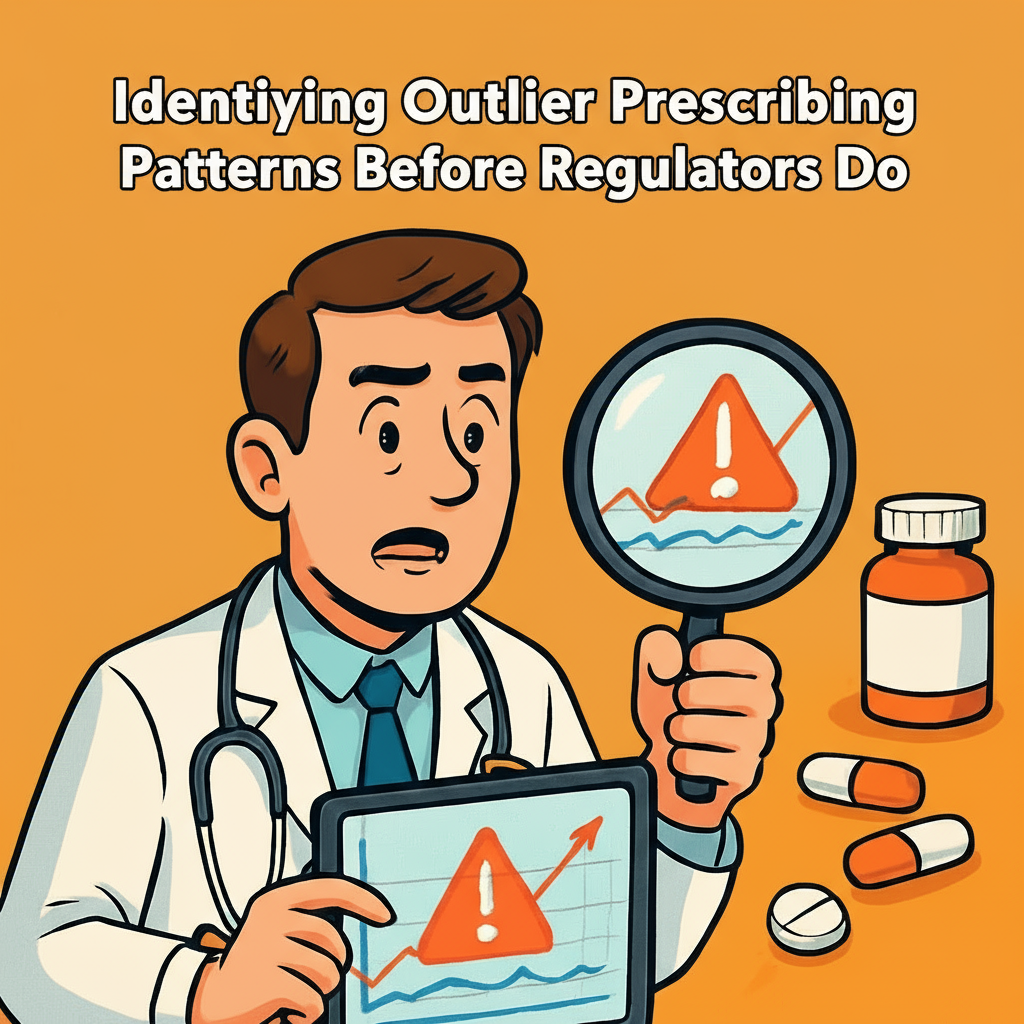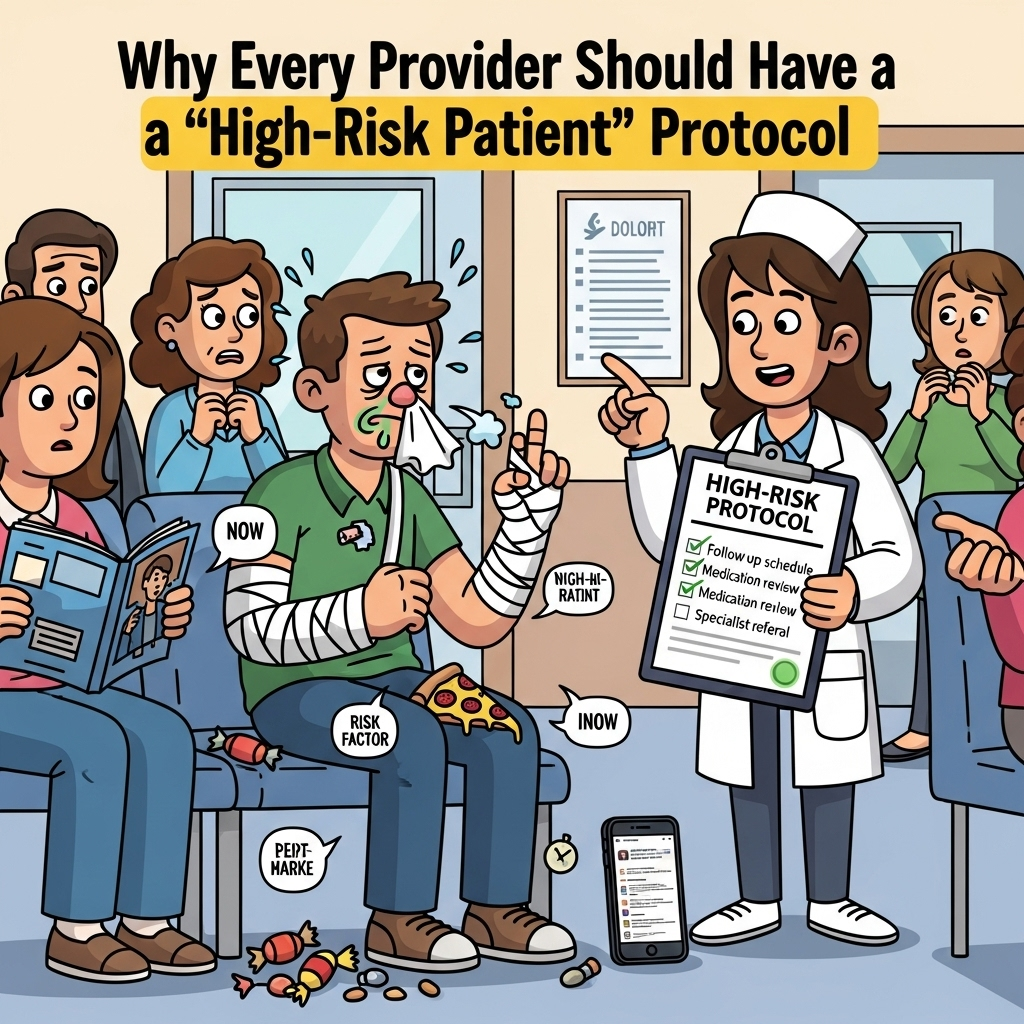
Prescription Monitoring Programs: How to Use Them Effectively
Doug Jorgensen
March 19, 2025
Introduction: Your First Line of Defense in Controlled Substance Management
In an era of heightened scrutiny over opioid prescribing and controlled substance use, Prescription Monitoring Programs (PMPs) have become a critical tool for providers.
When used effectively, a PMP can help identify red flags, prevent diversion, and protect both patient safety and provider liability.
Think of the PMP as a radar system—it won’t make prescribing decisions for you, but it can alert you to risks you might otherwise miss.
What Is a Prescription Monitoring Program?
Prescription Monitoring Programs (PMPs) are state-run electronic databases that track controlled substance prescribing and dispensing to enhance public health and safety. These systems are crucial tools for healthcare providers and pharmacists in combating opioid misuse, preventing drug diversion, and ensuring responsible medication management.
PMP functionalities include:
- Comprehensive Patient Prescription History: Instant access to a patient’s complete controlled substance prescription history, offering a holistic view of their medication use.
- Identification of Potential Misuse and Diversion: Analysis of prescription patterns helps identify “doctor-shopping,” “pharmacy-shopping,” and overlapping prescriptions, which can indicate drug misuse and increase risks.
- Verification of Treatment Adherence: Allows verification of whether prescriptions are being filled as intended, confirming adherence and identifying potential non-adherence or over-acquisition.
The widespread adoption and mandated use of PMPs highlight their importance. Most states require healthcare providers to check PMPs before prescribing controlled substances, particularly opioids, to reduce harmful practices, promote safer care, and mitigate the opioid crisis. PMP data also supports law enforcement investigations and informs public health initiatives and policy.
Why PMPs Matter
Prescription Monitoring Programs (PMPs) are vital tools for healthcare providers, enhancing patient care and promoting responsible prescribing. Key benefits include:
- Patient Safety: PMPs prevent dangerous drug interactions and reduce overdose risk by offering a complete view of a patient’s controlled substance history, identifying high-risk situations proactively.
- Regulatory Compliance: Many states legally require PMP use before prescribing certain controlled substances, making adherence essential for license maintenance and avoiding legal issues.
- Risk Mitigation: PMPs provide documented evidence of provider due diligence in monitoring controlled substance use, protecting against professional liability.
- Fraud Prevention: PMPs detect “doctor shopping” and diversion, preventing illicit controlled substance flow and protecting public health.
Best Practices for Using PMPs
Effective use of Prescription Monitoring Programs (PMPs) is vital for patient safety and combating the opioid crisis. Integrating PMP checks into clinical practice improves prescribing and reduces risks.
1. Make PMP Checks Routine: Perform PMP checks for all new controlled substance prescriptions, at regular intervals for ongoing therapy, and before refills. Integrate PMP access into your EMR system.
2. Document Meticulously: Record the date, time, and key findings of every PMP query, including prescribed substances, fill dates, other prescribers/pharmacies, and concerning patterns. Document all actions taken based on PMP findings.
3. Train Your Team: Designate and train authorized staff (e.g., nurses, MAs) to perform PMP queries. Training should cover system access, data interpretation, escalation protocols for suspicious findings, and patient privacy. Conduct regular refreshers.
4. Interpret and Act on PMP Data: Don’t just check; analyze data. Look for early refills, overlapping prescriptions, multiple prescribers (“doctor shopping”), unusual dosing, or dangerous drug combinations (e.g., opioids and benzodiazepines). Contextualize findings with the patient’s medical history. Discuss findings openly with patients and, when appropriate, communicate with other prescribers.
By following these practices, healthcare providers can use PMPs to enhance patient safety and promote responsible prescribing.
Common Pitfalls to Avoid
Effective utilization of Prescription Monitoring Programs (PMPs) is crucial for patient safety and regulatory compliance. However, healthcare providers often fall into several common traps that undermine the PMP’s effectiveness. Avoiding these pitfalls can significantly improve patient outcomes and protect practitioners from legal and ethical repercussions.
- Checking only for opioids: PMPs track various controlled substances (benzodiazepines, stimulants, muscle relaxants). Comprehensive checks prevent dangerous polypharmacy and drug-seeking behavior.
- Failing to act on findings: Address red flags immediately by documenting conversations, adjusting prescriptions, referring patients (e.g., to addiction specialists), and communicating with other providers while adhering to HIPAA. Proactive intervention is key.
- Inconsistent use: Sporadic checks are risky; data changes quickly. Regular, mandated checks (e.g., before first prescriptions, refills, with new patients, or suspected misuse) identify evolving risks and prevent regulatory issues. Standardized PMP protocols ensure consistent application and reduce regulatory risk.
Integrating PMPs with Other Risk Mitigation Strategies
Prescription Monitoring Programs (PMPs) are vital in combating drug misuse when integrated with other risk mitigation strategies. This layered approach enhances patient safety and promotes responsible prescribing.
PMPs are most effective when combined with:
- Controlled Substance Agreements (CSAs): Formal contracts outlining patient and prescriber responsibilities, dosage, single prescriber agreement, and random drug testing. CSAs provide a behavioral framework and allow direct addressing of PMP-identified issues.
- Urine Drug Testing (UDT): Objectively verifies adherence and detects illicit substances. Baseline, random, and confirmatory testing, correlated with PMP data, reveals substance use disorder, diversion, or non-compliance patterns.
- Pill Counts: Physically counting remaining medication to assess adherence and detect diversion. This offers a direct, immediate check complementing PMP data.
- Scheduled Follow-up Visits: Regular appointments to monitor progress, assess treatment effectiveness, and identify risks. These visits allow evaluation, PMP data review, CSA reinforcement, and treatment adjustments, fostering open communication and early intervention.
This integrated approach strengthens oversight and safe prescribing by:
- Enhancing Risk Identification: PMP data identifies “doctor shopping,” while UDT and pill counts reveal individual adherence and diversion.
- Improving Patient-Provider Communication: CSAs set expectations, and follow-up visits facilitate discussion.
- Tailoring Interventions: Comprehensive data enables specific patient needs and targeted interventions.
- Increasing Accountability: For both patient and prescriber.
- Promoting Responsible Prescribing: Fosters judicious and safe controlled substance prescribing, leading to better patient outcomes and public health.
Ethical Considerations
Prescription Monitoring Programs (PMPs) are vital healthcare safeguards requiring discretion, ethics, and patient privacy. Their effective use involves empathetic communication, not just data analysis. Providers must approach patients with concern, not suspicion, even if PMP data raises questions. The goal is to identify risks and ensure safety, not criminalize. Discussions should be collaborative, focusing on well-being to build trust and encourage honesty.
PMP data privacy is paramount, protected by law, and accessible only for legitimate clinical reasons. Unauthorized access or disclosure is a serious breach. Providers must secure this data, adhering to regulations like HIPAA, ensuring restricted access, secure storage, and confidential discussions. Ethical PMP use demands constant vigilance to protect patient information, solely for enhancing safety and responsible prescribing.
Final Thoughts: Prevention Is Better Than Damage Control
Prescription Monitoring Programs aren’t just a regulatory hoop to jump through—they’re a frontline safeguard against harm to patients, liability for providers, and broader public health risks.
When you make PMP checks part of your standard process, you protect your patients, your license, and the integrity of your practice.
About the Author
Douglas J. Jorgensen, DO, CPC, FAAO, FACOFP
Dr. Doug is a physician, consultant, and national educator on healthcare compliance, controlled substance prescribing, and risk mitigation. He helps practices implement evidence-based prescribing protocols that stand up to regulatory scrutiny.


